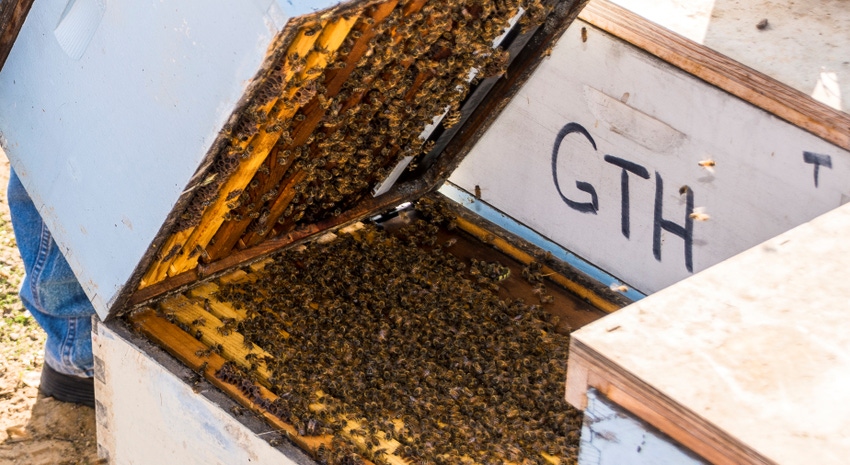
Almond growers are encouraged not to skimp on pollination programs, even in the wake of low grower returns. This includes recommendations from the Almond Board of California related to bee health and sustainability.
Near-perfect weather during last season's almond bloom lended itself well to a good pollination period, said Josette Lewis, chief science officer for the Almond Board of California. Though almond bloom happened rather quickly and was compact across all varieties, particularly in the central region of the state, dry weather and warm temperatures allowed for high bee flight hours.
The Almond Board continues to promote its bee best management practices to help growers achieve maximum pollination while protecting the honeybees necessary to pollinate their crop. These efforts and recommendations come as pollination costs have skyrocketed in the past 20 years – up from about $40 per hive in 2002 to about $200 today.
In a recorded message that was part of the virtual almond conference in December, Lewis said current guidance for proper pollination remains two hives, each with 12-16 frames of honeybees. This comes even as nurseries are creating "self-compatible" varieties marketed as needing fewer or no bees for pollination.
"It will take several years to get good enough data for the self-compatible varieties," she said.
As research continues, Lewis says the industry is learning about practices to protect and promote bee health, such as avoiding fungicide sprays during the day when bees are foraging, and the employment of cover crops to encourage bee activity. Cover crops do not compete with almond blossoms and can encourage bee activity when those trees do start to blossom.
Tank mixing more than one crop protection product is also discouraged as a cost-cutting measure. Even when using products labeled safe for pollinators, the unknown effect of mixing these chemicals is linked with bee health issues because of untested compatibility related to the various combinations of labeled products. Furthermore, fungicide sprays should be sprayed after bee flight hours have ended and with enough time for droplets to dry before bees return to foraging the next day.
Lewis also cautions growers and pest control advisors from using adjuvants with these products, unless specifically called for on the label, as there is increasing evidence some of these adjuvants can harm bee health.
"Unfortunately, almonds are often linked in the press with all the challenges that honeybees face, and while we have a robust program to correct misinformation, following the bee best management practices is the most essential way to demonstrate we are responsible in the practices we use to grow almonds," she said.
About the Author(s)
You May Also Like






